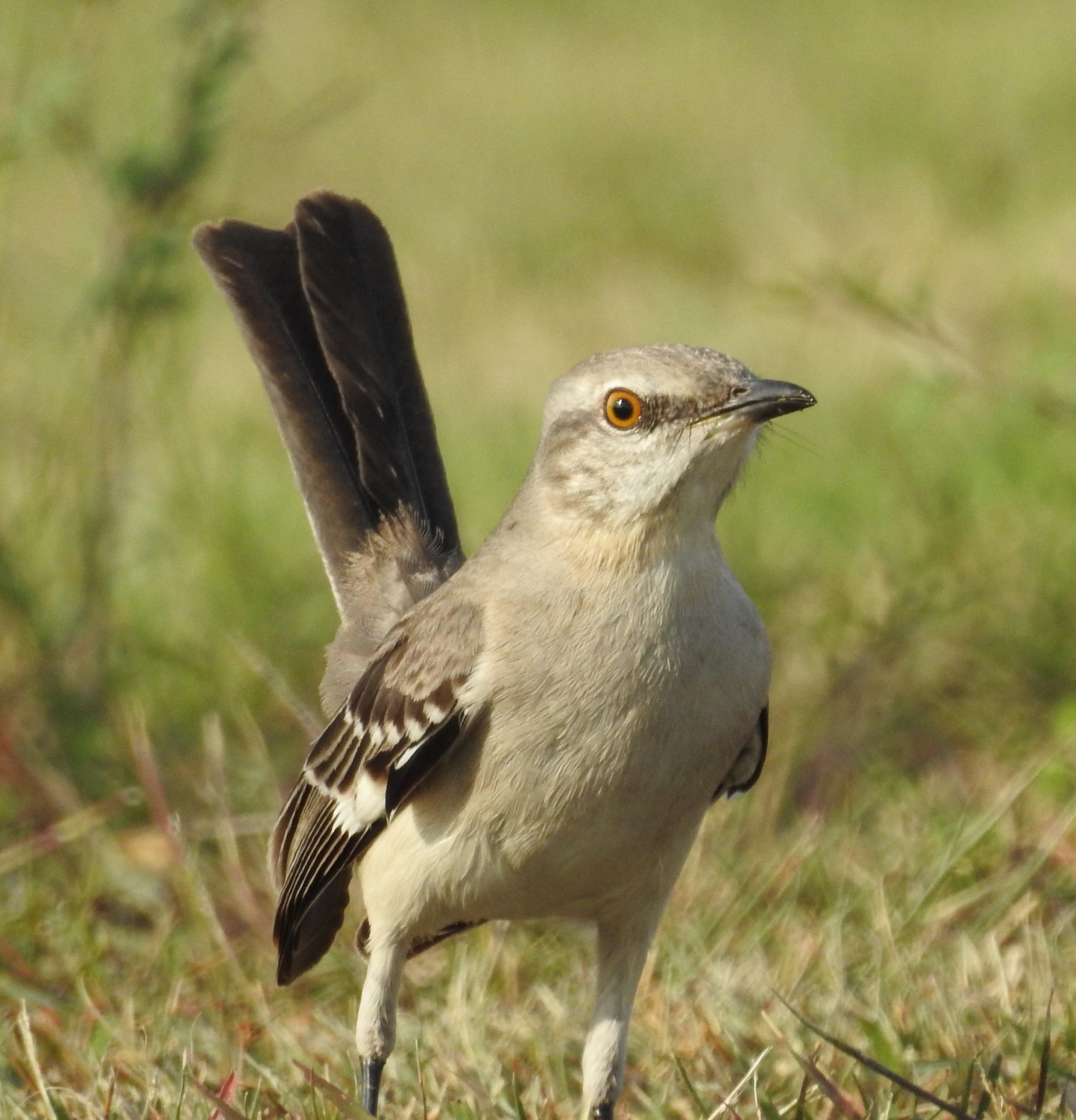by M. Kathy Raines
“Hush, little baby, don’t say a word! Papa’s gonna buy you a mockingbird!” begins a cherished lullaby. Yet, one wonders: why would anyone buy a mockingbird when its melodies tumble from treetops for all to enjoy? And the folk song apparently originated in the South, the mockingbird’s original realm.

This lyric speaks to the strange human proclivity to possess. Before the early 20th century, Americans widely poached, marketed and caged these prolific singers—depleting their populations—along with especially vivid birds like male painted buntings and rose-breasted grosbeaks. Beauty can prove a liability.
In 1828, a mockingbird, especially an older, experienced singer, could fetch as much as $50, akin to over a thousand today. Thomas Jefferson kept several, along with other fowl, for pets, including a favored one christened Dick, who reputedly perched on his shoulder, took food from his lips and, according to his friend, historian Margaret Bayard Smith, would “pour out his song” while Jefferson played violin. Fortunately, the Migratory Bird Treaty, passed in 1918, largely put a stop to the marketing and caging of such beauties in the U.S.
So beloved is the northern mockingbird that its name appears in everything from Harper Lee’s To Kill a Mockingbird, to the popular nineteenth century ballad “Listen to the Mockingbird” and Emenem’s song “Mockingbird”, dedicated to his daughter and niece.
The feisty mockingbird fiercely protects its nesting areas, flashing its white wing patches and divebombing foes—be they cowbirds, who try to lay eggs in nests, hawks, cats or meddlesome humans. Mockingbirds attacked one hat-wearer who drew too close, then later attacked others who wore hats. The General Federation of Women’s Clubs, in the 1920s, chose the mockingbird as Texas’ state bird partly because it proved to be “a fighter for the protection of his home, falling, if need be, in its defense, like any true Texan.”
Mockingbirds are not the only mimids—facile imitators of birds, frogs, crickets and mechanical sounds—whose lengthy, intricate melodies spill out from treetops, roofs and wires. Peering upwards to watch this grayish, long-tailed, yellow-eyed songster, Valley residents may instead spot, in neighborhoods, a curve-bill thrasher or, in the wilds, a long-billed thrasher, both of which have spotted chests and orangish eyes. Farther north, Texans may see a handsomely suited gray catbird or brown thrasher belting out a tune.
Mockingbirds vocalize in numerable ways, including chirping, buzzing and making a “chewp” call, all of which may contribute to songs. At one or two months, a juvenile begins singing and apparently continues learning tunes throughout adulthood. An eloquent male, whose artistry implies exceptional health, may prove both appealing to prospective mates and intimidating to rivals. A mockingbird can simultaneously force air through both sides of its syrinx, or vocal organ, with lower and higher frequencies sounding simultaneously. Singing during about three/fourths of the year, both males and females may perform for hours. Distinctive to mockingbirds is their tendency to repeat a phrase two or three times before moving on to another.

Tales of mockingbird songs abound, from a high school football game’s being thrown into disarray when a bird mimicked a referee’s whistle to a mockingbird’s joining a concert of the National Symphony’s performance of Peter and the Wolf, where it imitated the flute’s birdsong. In springtime, venturing outside in the wee hours, we may be treated to an hours-long mockingbird recital—usually that of a single male, likely seeking a mate.
The northern mockingbird (Mimus polyglottos) derives its name from its ability to mimic and for its being a polyglot, or a speaker of multiple languages. Some locals call mockingbirds chileros for their habit of feeding upon chilipiquin peppers. Spanish speakers call the bird cenzontle comun or sinsonte norteño, meaning, respectively, common or northern mockingbird.
Mockingbirds chase or hawk (catch airborne) grasshoppers, ants and other invertebrates and small lizards, especially during breeding season. They also love fruits, especially berries, and eat suet and seeds.
Northern mockingbirds, whose territories are expanding, breed throughout the South and lower Midwest but also in the Northeast, some remaining in their northern habitats during the winter and others migrating further south. Adaptable birds, they appreciate scattered vegetation for nesting and cover, farmland, desert brushlands, thorn scrub and woods.
Mockingbirds, like others, sing to stake out and preserve territories and attract mates, but who is to say that they, like we, do not sometimes sing for joy?


